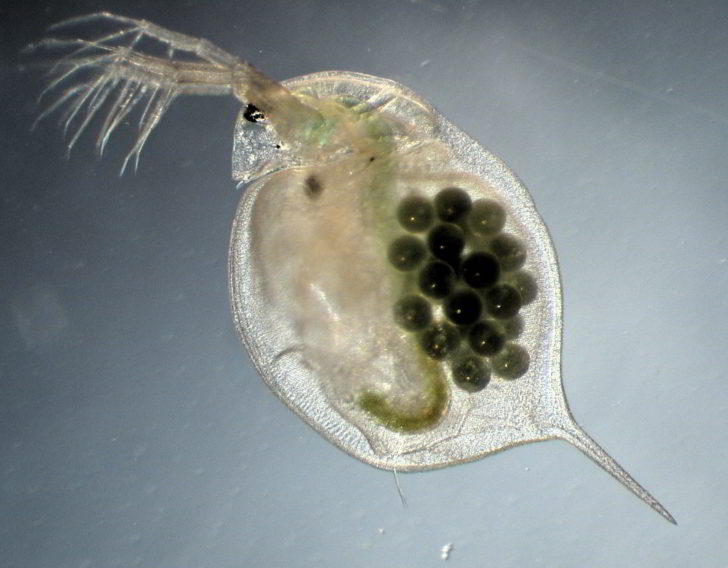Tiny medicines in the environment

Nanomedicine is progressing rapidly. However, the tiny nanoparticles that are being researched as carriers for drugs could in future find their way into water, soil and the air. Empa researchers are investigating possible risks.
Fear is a bad counselor. In the comic strip, the Gaul chief Majestix may be afraid that the sky will fall on his head. But in a real world, risks should be assessed with a cool head. To ensure that risk assessments are not determined emotionally but lead to appropriate decisions, scientists use models to analyse the potential dangers of substances or technologies, for example. Empa researchers are currently determining the risks of a relatively new class of substances made from tiny materials: drugs made from nanomaterials. It is already known that some conventional pharmaceuticals are released into the environment after being ingested or applied to the skin. In the animal world, for example, hormone-like substances can lead to thin-shelled bird eggs, fertility disorders in fish and population decline in otters.
Tiny particles with big tasks
However, nanomedicine is already reporting promising successes with new drugs. With nano-diamonds, physicians overcome the blood-brain barrier, and with gold nanoparticles they fight against cancer. No task seems too big for the tiny particles. Little is known, however, about the risks of these types of nanomaterials once they enter the environment.
Empa researchers led by Bernd Nowack from the "Technology and Society Lab" in St. Gallen are currently calculating the risks of these nanomaterials. The team is also involved in the international research and innovation project "BIORIMA". This interdisciplinary project is working on the risk management of nanobiomaterials for humans and the environment and is supported by "Horizon2020", the EU's research and innovation support program.
Fate of nanomaterials in the body
Risk analyses are basically a function of hazard potential and exposure. In other words: a highly dangerous substance to which no one is ever exposed poses just as little risk as a harmless substance with which one is constantly in contact. However, in order to precisely map the risks of new substances, researchers first determine the threshold value at which a substance no longer has any harmful effects at the moment and the expected release into the environment. However, this information is not trivial, as the fate of the drug in the body and its route to the sewage treatment plants and from there to the water and thus to the biosphere must first be determined. And once released into the environment, polymers change, for example, by being broken down into smaller building blocks through biological or physico-chemical decomposition. In addition to pharmacological studies, the researchers also use the analysis of material flows and mathematical environmental models. "For the majority of nanobiomaterials, no reliable estimates of the amount of particles released are available to date," says Nowack. It is imperative that these gaps in knowledge be closed.
Nano-gold poses no problem
Nowack closed the first gaps some time ago when he and his team assessed the risk of gold nanoparticles in the environment. "At present, it can be assumed that nano-gold does not cause any problems in medical applications," the researcher said. In the new study, Nowack's team has now analyzed other nanomaterials that are used in medicine. Particles between 1 and 100 nanometers in size are interesting because they are relatively easy to produce and can be used, for example, for medical imaging procedures, antimicrobial coatings or for drug delivery.
Based on existing data, some of the substances used so far have now been investigated for the first time, including some frequently used nanomaterials: These included, for example, nano-chitosan, a derivative of a naturally occurring polysaccharide contained in the shell of crustaceans, which supports wound healing. Other substances analyzed were polyacrylonitrile, PAN for short, which is used in antibacterial therapy, and hydroxyapatite (HAP), a natural mineral. HAP is used in medicine, for example in connection with the release of drugs or the regeneration of bone tissue.
The analyses showed that chitosan in its traditional form, as soon as it enters freshwater, has a stronger toxic effect on water microorganisms than in its nanoform. Thus, nano-chitosan is even less dangerous for aquatic organisms. This means that the extent of the harmful effects of the nano-polymer was also significantly lower than that of conventional drugs that enter the environment, such as antibiotics or painkillers. The nano-polymer PAN and the mineral HAP performed even better. "These substances are virtually non-toxic in water," says Nowack.
However, the situation is different for nanosilver, which is valued in medicine for its antibacterial effect. But what is desirable in the treatment of diseases is problematic in the environment: In the biosphere, the inorganic nanomaterial also has a toxic effect on microorganisms, although these can be important for the balance in an ecosystem.
Large surface area
"It can be assumed that the biological, chemical and physical properties of many nanomaterials may differ significantly from those of other drugs," says Nowack. This is due, among other things, to the extraordinarily high number of substance particles and their much larger total surface area. It is important to note that it is currently possible to assess the environmental hazards of certain substances. For complete risk analyses, however, it would first have to be determined to what extent flora and fauna - and ultimately humans - come into contact with nanomaterials. The team is currently compiling these exposure data for the relatively young class of nanomedicines within the "BIORIMA" project.
The data obtained are also being incorporated into the process of developing new medicines. Empa researcher Claudia Som refers here to the "safe by design" approach: "We have drawn up guidelines for SMEs with which risky nanobiomaterials can be sorted out early in the costly development process," explains the researcher. Empa's risk analyses thus support sustainable innovation in the field of nanomedicine.
Source: https://www.empa.ch/web/s604/nanosafety
Original articles: https://jnanobiotechnology.biomedcentral.com/articles/10.1186/s12951-019-0489-8
https://www.tandfonline.com/doi/full/10.1080/17435390.2019.1568604